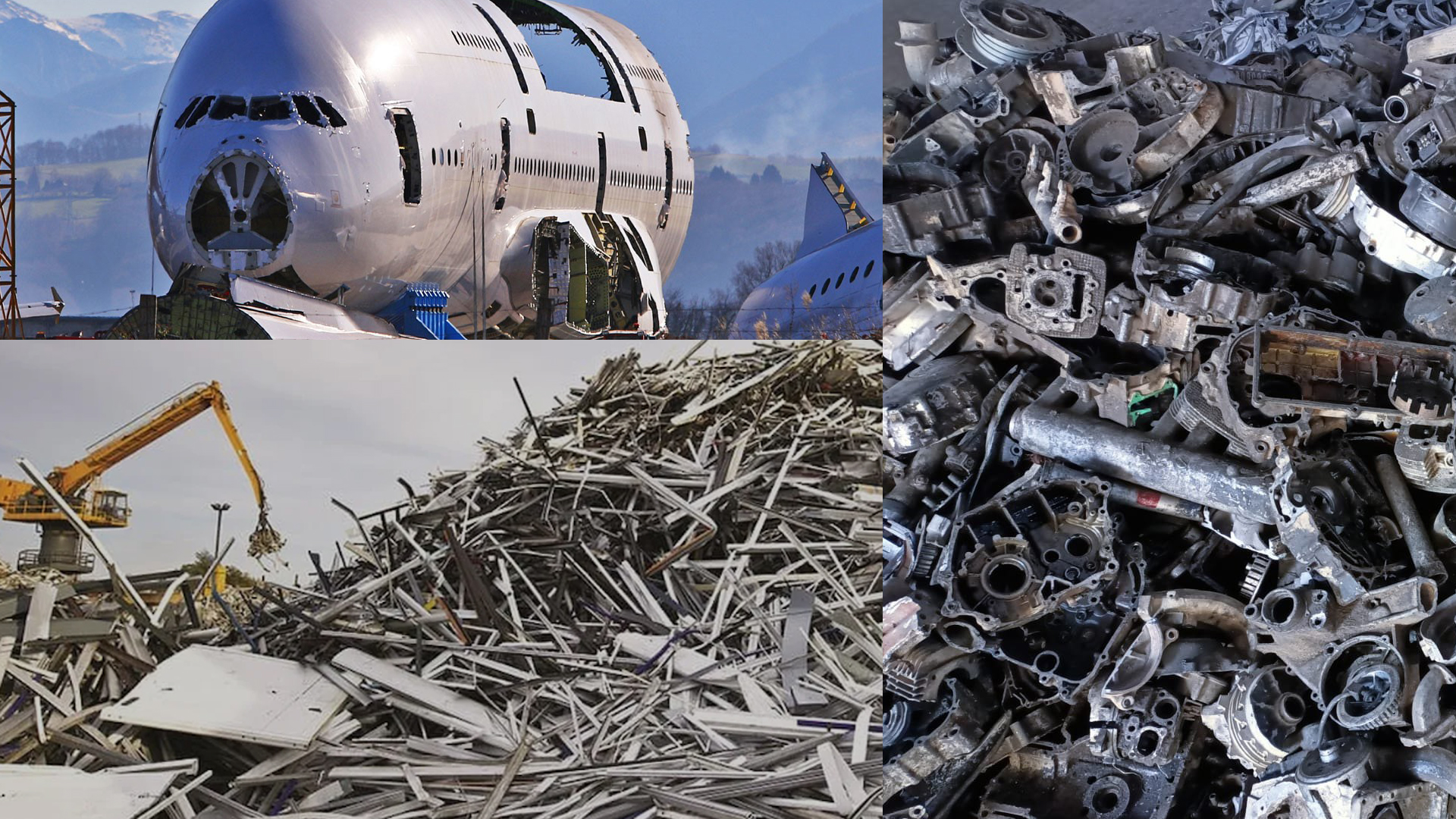How are various industries utilising aluminium scrap?
Contributed by: Team AL Circle
2024-03-30
Due to its versatility, aluminium is used across multiple industries, from food packaging and beverage cans to military-grade equipment and golfing gear. However, producing primary aluminium is expensive and has a far-reaching environmental impact due to high energy consumption. This is where recycling aluminium scrap comes into play.

Aluminium is an infinitely recyclable metal that retains almost all its properties after recycling. It is considered a green metal as it can contribute to and support the sustainability efforts of manufacturers across industries. Aluminium scrap can be recycled to make secondary aluminium, which requires less water and energy and lessens carbon emissions. This article explores how three big industries are utilising aluminium scrap in their operations.
Automobiles
Aluminium has been used in automobile manufacturing for several decades. However, manufacturers have realised that using virgin aluminium is cost- and energy-intensive. Therefore, big names like Jaguar Land Rover are planning to shift to scrap aluminium for their vehicles. The premium car brand has invested millions of dollars into R&D and developing new recycling processes, alloys, and techniques to make the most of scrap aluminium. Modern vehicles like electric cars are also using scrap aluminium. Experts opine that since aluminium scrap is affordable, it would help manufacturers produce vehicles at a lower cost. Hence, they can sell the EVs at cheaper rates.
Construction
Aluminium is also used extensively in the construction industry. Roofs, skirting, door and window frames, staircases, and safety ramps all use aluminium to make structures more durable and stronger. Aluminium is also used in building facades to make greener, insulated, and more sustainable buildings. Extrusion aluminium scrap is commonly used in this industry. Pacific Northwest National Laboratory (PNNL) of the US Department of Energy is now redefining the use of aluminium scrap in construction through a new technology, Shear Assisted Processing and Extrusion Process, aka ShAPE. One of the goals of this technology is to reduce the use of primary aluminium and generate a circular economy for aluminium scrap. With this technology, 100% post-consumer scrap aluminium can be converted into usable aluminium extrusions that meet the strict ASTM standards prescribed for building and construction. ShApe will also reduce carbon emissions during scrap aluminium processing by 90%. The patent for this technology is still pending. Entrepreneur Eric Donsky founded a start-up, Atomic13, which signed a deal with PNNL to leverage ShApe and recycle aluminium scrap to create low-extruded parts for the construction industry.
Aerospace
Aluminium is a vital metal in the aerospace industry due to its properties like heat and corrosion resistance, durability, strength, and low cost. Currently, it facilitates the lightweighting efforts of aircraft manufacturers in the modern landscape. Therefore, this industry has scope for scrap aluminium, especially when big brands collaborate.
A key player in the aluminium production market, Alcoa, partnered with Boeing, the aircraft manufacturer, to effectively use aluminium scraps from 2XXX and 7XXX-series alloys. The scrap material will be used to make the aircraft's wings and fuselage parts—the closed-loop program aimed to utilise maximum aluminium scrap and reduce wastage. The aerospace industry is also strategically trying to recycle aluminium and metal scraps from end-of-life aircraft to boost a circular economy.
The growing aluminium scrap industry and its opportunities
In 2021, the International Aluminium Institute (IAI) unveiled that 20 million tonnes of scrap aluminium were recycled. It indicates a low dependency on primary aluminium and a reduction of almost 300 million tonnes of greenhouse gas emissions. According to industry sources, in 2023, the global aluminium scrap market was valued at USD 7.60 billion. By 2023, the projected valuation is USD 28.12 billion, accompanied by a CAGR of 7.9 % between 2024 and 2032.
As indicated by the numbers, the aluminium scrap industry is on a path of growth. However, it is growing with others. It also facilitates innovation, development, and collaboration in other fields that use aluminium in their operations. The development of ShApe technology is a glaring example. In the future, such opportunities will only become more prominent and widespread. Amidst all this, it will be interesting to see how scrap aluminium will cement its position in the industry mentioned in the article as well as find new uses in other industries.
Categories
Raw Materials
Scrap
Consumables
Primary Aluminium
Secondary Aluminium
Equipment
Technology
Downstream Products
Finished Products
Utilities
Services
Others
Recent Blogs
Subscribe to newsletter
Connect with us












